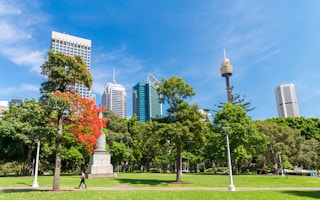When most people think of climate change, they think of the potential dangers: higher temperatures, rising sea levels and ferocious storms. They don’t think of a potential massive economic boost – but that’s just what Australia’s building sector has within reach, if only we can persuade governments to take the necessary steps to get there.
Climate change represents just that – change in the way we do things. With change comes opportunity.
ASBEC’s new report, Low Carbon, High Performance, contains detailed economic modelling by ClimateWorks showing how reducing emissions in the building sector will save money, grow jobs and improve quality of life for all Australians.
At last year’s Paris climate talks, Australia signed up to meet some ambitious climate targets. We’re going to have to reduce our overall emissions substantially to meet them. Only the building sector can help us get there in time.
Buildings produce almost a quarter of Australia’s emissions, but unlike the transport or aviation sectors, we already have the technology to massively reduce building emissions.
We’re all familiar with rooftop solar panels, but emerging technologies will improve things even further. These include solar photovoltaic cells that are integrated into building materials, replacing roofing materials. Better collection and use of data, in the form of realtime feedback on energy use and low-cost sensors, can also help optimise building performance, lowering emissions and minimising time and money spent on maintenance.
Prefabrication of building components also has the potential to reduce construction time and costs, while enabling off site construction of building elements and permitting high levels of customisation – improving building quality and asset value. All these technologies will require skilled workers to make and implement them, boosting jobs in the Australian building sector.
The report shows how technologies and practices like these will save a whopping $20 billion – or $2 for every $1 invested. The major component of these energy savings will be delivered by buildings that are cheaper to light, heat and cool, but in addition our buildings will support greater productivity.
“
Governments need to establish a national plan towards zero carbon buildings by 2050, which should make it clear who takes ministerial responsibility, develop and implement policy frameworks, set interim and longterm targets, and coordinate local, state and federal governments.
Ken Maher, president, Australian Sustainable Built Environment Council
The benefits are not just economic and environmental. Research shows that buildings designed for low emissions are also just better buildings. Features like more natural light and more comfortable temperature make low carbon buildings more productive, healthier places to live, work and learn.
Australia’s building sector is already well placed to become a global leader in energy and sustainability. Over the past decade, market leaders here in Australia have demonstrated that rapid improvements in building energy performance are possible.
For example, property group Stockland have successfully reduced emissions across their office portfolio by 50 per cent since 2006, with the World Dow Jones Sustainability Index naming Stockland the world’s most sustainable real estate company.
However the benefits of a zero carbon building sector can’t happen without government backing. While our industry leaders have shown that substantial improvements can be achieved in the design and construction of high performance buildings, energy intensity has only improved by two per cent across the commercial sector in a decade.
Things are a little better in the residential sector, with five per cent improvement, mostly as a result of the high take-up of rooftop solar by Australian households. But these improvements are not enough.
A range of interconnected financial and non-financial barriers stand in the way of achieving the changes we need. Low Carbon, High Performance sets out the key steps that policymakers need to take to overcome these barriers and achieve the necessary transition.
Governments need to establish a national plan towards zero carbon buildings by 2050, which should make it clear who takes ministerial responsibility, develop and implement policy frameworks, set interim and longterm targets, and coordinate local, state and federal governments.
We’ll also need strong mandatory minimum standards for buildings, equipment and appliances, and to establish a clear forward trajectory for future standards progressively implemented up until 2050.
Targeted incentives and programs can support higher performance in the short to medium term. For example, governments can use their considerable power as purchasers and provide financial incentives for building owners and tenants to implement emissions reducing initiatives.
Our energy market needs reform to support the implementation of cost-effective energy efficiency and distributed energy improvements, by removing energy market barriers and distortions.
To enable informed consumer choice and support the innovation, commercialisation and deployment of new technologies, and business models for delivery of energy efficiency and distributed energy solutions, we also need resource-appropriate energy data, information, research and education measures.
The opportunity cost of not acting quickly is stark. Even five years of delay will lock in low performing buildings for decades, reducing our chance to meet emissions targets and encumbering us all with higher energy costs and buildings of lower quality.
ASBEC’s members from across the building sector call on governments to make the policy commitments we need to access a low carbon future: one that will be more productive, prosperous and healthy for all Australians. We need to protect the climate we all enjoy – and the fragile planet we all share.
This story is republished with permission from The Fifth Estate.











